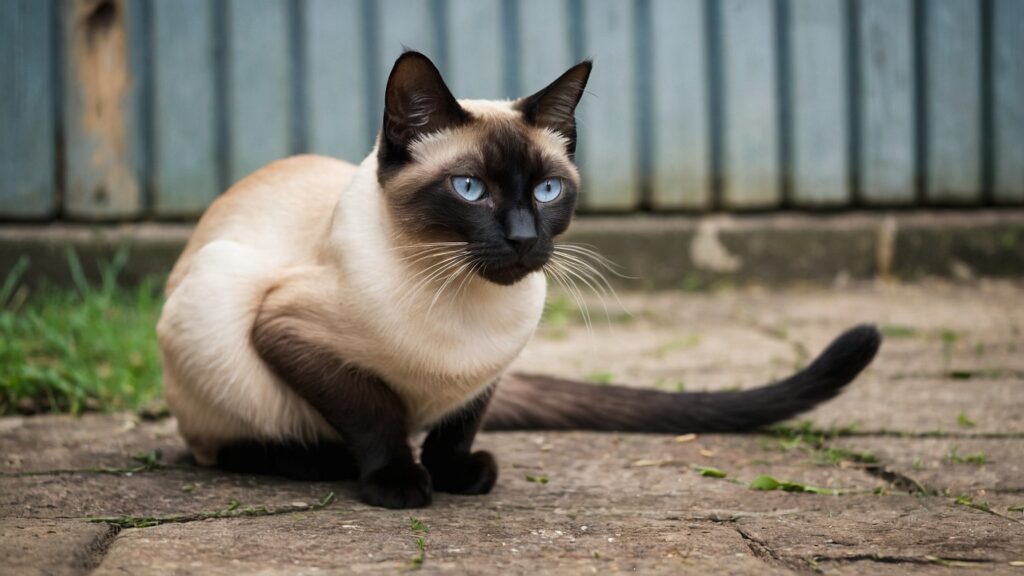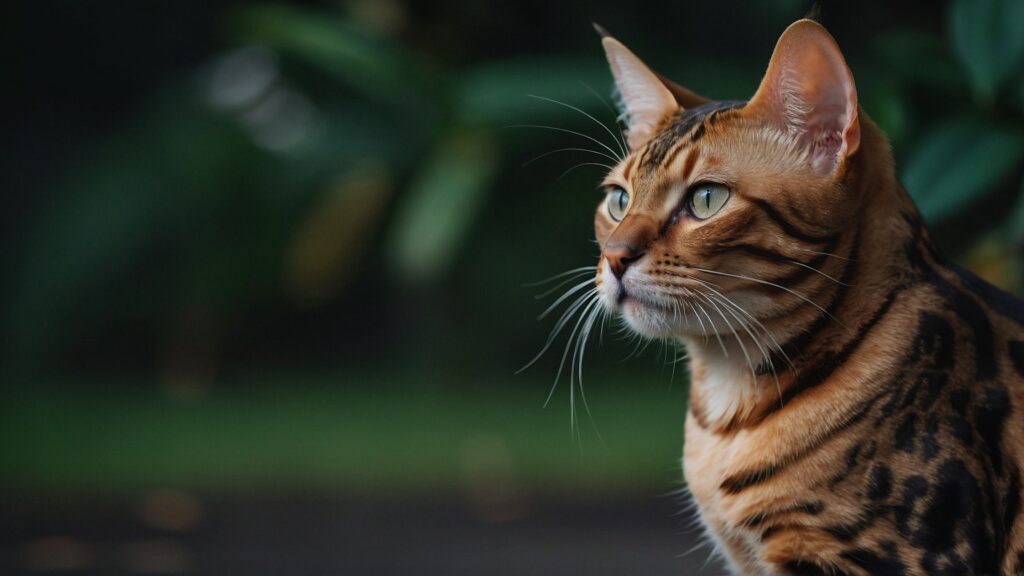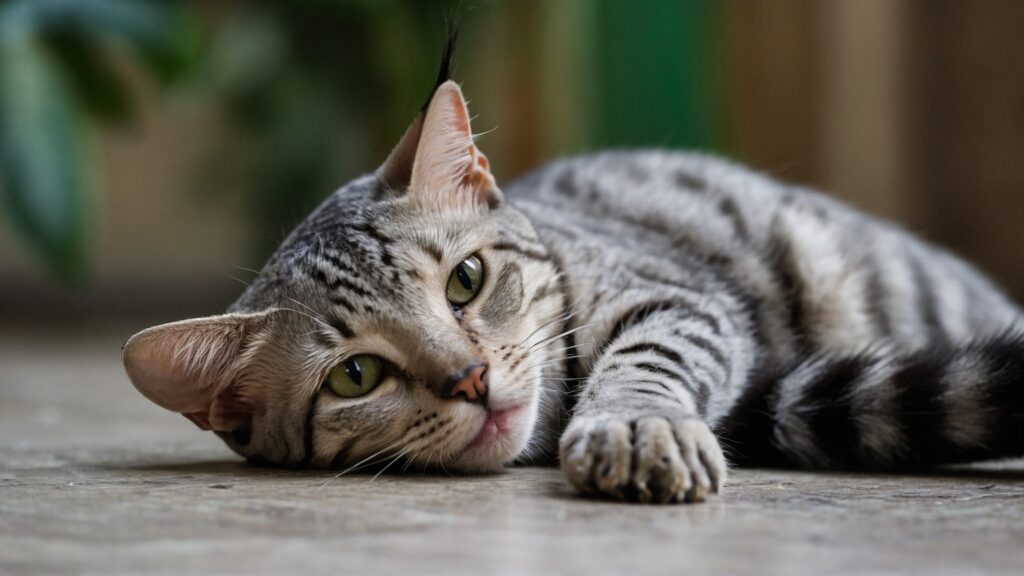While cats are often perceived as docile and affectionate companions, it’s important to recognize that some breeds can exhibit more aggressive behaviors than others. Feline aggression can stem from various factors, including genetics, environment, and lack of proper socialization. As responsible pet owners, it’s crucial to understand a breed’s tendencies and behavior patterns before making the commitment to adopt.
Aggression in cats should not be taken lightly, as it can lead to accidents, injuries, and potential legal consequences. However, with the right knowledge, precautions, and training, many aggressive tendencies can be managed and even prevented. This comprehensive guide aims to shed light on some of the most aggressive cat breeds, provide insights into feline aggression, and offer practical tips for responsible pet ownership.
Table of Contents
Top Aggressive Cat Breeds
While any cat can potentially exhibit aggressive behavior, certain breeds are known to be more prone to aggression due to their genetics and inherent traits. Here are some of the top aggressive cat breeds to be aware of:
Siamese

Origins and Temperament of Siamese Cats
Siamese cats are known for their striking appearance, with a cream-colored body and distinct dark points on their face, ears, legs, and tail. However, beyond their beautiful looks, Siamese cats are also renowned for their vocal nature and territorial behavior, which can sometimes manifest as aggression.
Originating from Thailand, these cats were once revered as companions to royalty. Their territorial instincts and protective nature made them excellent guardians, but these same traits can also lead to aggressive behavior towards other pets or strangers if not properly socialized.
Siamese cats are highly intelligent and require plenty of mental stimulation and playtime. Without proper outlets for their energy and attention, they can become bored, destructive, and potentially aggressive. Early socialization and training are crucial to help manage their natural tendencies and foster a well-adjusted personality.
Bengal

The Wild Lineage of Bengal Cats
The Bengal cat is a unique breed that traces its lineage back to the Asian Leopard Cat, a small wild feline species native to Asia. This genetic connection contributes to the Bengal’s distinctive spotted coat and their high energy levels, which can sometimes manifest as aggression or excessive roughhousing.
Bengals are known for their athletic abilities, curiosity, and strong prey drive. While their hunting instincts can make them fantastic hunters of small prey, it can also lead to aggressive behavior if not properly channeled. Bengals require ample playtime, environmental enrichment, and positive reinforcement training to redirect their natural impulses in a constructive manner.
Without proper socialization and an outlet for their energy, Bengals can become destructive and exhibit aggressive behaviors such as biting, scratching, or even attacking other pets or household members. It’s essential to provide them with a stimulating environment and firm yet patient training to curb any potential aggression.
Egyptian Mau

The Unique Spotted Feline: Egyptian Mau
The Egyptian Mau is a naturally occurring breed that traces its roots back to ancient Egypt, where it was revered for its unique spotted coat and hunting abilities. These cats are known for their agility, intelligence, and wariness towards strangers, which can sometimes translate into aggressive behavior if not properly socialized.
Descended from desert-dwelling ancestors, Egyptian Maus have strong hunting instincts and a natural curiosity that can lead them to explore and investigate their surroundings. While these traits can make them entertaining companions, they can also contribute to territorial behavior and potential aggression if their needs for mental stimulation and exercise are not met.
Egyptian Maus are highly active and require ample playtime and interactive toys to channel their energy constructively. Without proper socialization and training, they may exhibit aggression towards unfamiliar people or animals, as well as engage in destructive behavior out of boredom or frustration.
Somali

The Lively and Adventurous Somali Cat
The Somali cat is a breed known for its lively and adventurous nature, which can sometimes lead to aggressive behavior if not properly managed. These cats are highly active and intelligent, with a strong prey drive and a tendency towards territorial behavior.
Originally hailing from Somalia, Somali cats were bred to be agile hunters, which contributes to their high energy levels and need for mental and physical stimulation. Without proper outlets for their energy and curiosity, Somali cats can become bored, frustrated, and potentially aggressive.
Somali cats thrive in environments where they can explore, climb, and engage in interactive play. However, if their needs for exercise and environmental enrichment are not met, they may exhibit aggressive behaviors such as scratching, biting, or even attacking other pets or household members out of frustration or boredom.
To prevent aggression in Somali cats, it’s essential to provide them with ample playtime, interactive toys, and a stimulating environment that allows them to channel their natural instincts in a constructive manner.
Understanding Feline Aggression
While some cat breeds may be more prone to aggressive behavior, it’s important to understand the underlying causes and types of aggression in order to effectively manage and prevent such incidents.
Types of Aggression in Cats
Feline aggression can take various forms, each with its own set of triggers and characteristics. Understanding these different types of aggression can help cat owners identify and address potential issues before they escalate. Here are some common types of aggression in cats:
- Fear-based aggression: This type of aggression is a defensive reaction triggered by a perceived threat or unfamiliar situation. Cats may exhibit behaviors such as hissing, growling, swatting, or biting as a means of protecting themselves.
- Territorial aggression: Cats are naturally territorial animals, and they may display aggressive behavior towards other cats or animals that they perceive as intruders in their territory. This can manifest as marking, growling, or even physical altercations.
- Petting-induced aggression: Also known as “status-related” aggression, this type of aggression can occur when a cat feels overstimulated or uncomfortable during petting or handling. It may be triggered by petting a sensitive area or for too long, and can result in biting or scratching.
- Redirected aggression: This occurs when a cat’s aggression is redirected towards an unintended target, such as another pet or a human, due to frustration or arousal from a previous stimulus (e.g., seeing an outdoor cat through a window).
- Maternal aggression: Female cats can become highly protective and aggressive towards perceived threats when they have kittens, as a means of defending their litter.
- Pain-induced aggression: Cats in pain or discomfort, whether due to an injury, illness, or aging, may exhibit aggressive behavior as a defensive mechanism or a reaction to being handled or touched in sensitive areas.
Understanding the underlying cause of a cat’s aggression is crucial for effective management and prevention strategies.
Signs of Aggression to Watch Out For
Recognizing the signs of aggression in cats is essential for preventing escalation and ensuring the safety of both the cat and its owners. Here are some common signs of aggression to watch out for:
- Growling, hissing, or yowling: These vocalizations are often a warning sign that a cat feels threatened or agitated.
- Swatting or scratching: A cat may use its paws to swat or scratch as a defensive or aggressive behavior.
- Biting: Biting is a more severe form of aggression and can cause injury to humans or other animals.
- Arched back: An arched back, with the hair standing on end, is a classic defensive posture that signifies fear or aggression.
- Flattened ears: Flattened or rotated ears can indicate a cat’s displeasure or aggression.
- Dilated pupils: Dilated pupils can be a sign of fear, excitement, or aggression.
- Tail movements: A rapidly twitching or thrashing tail can signal agitation or aggression.
It’s important to recognize these signs and respond appropriately to avoid escalating the situation or provoking further aggression.
Managing and Preventing Aggressive Behavior
While some degree of aggression may be inherent in certain cat breeds, there are several strategies that can help manage and prevent aggressive behavior:
- Early socialization and training: Proper socialization and positive reinforcement training from an early age can help shape a cat’s behavior and reduce the likelihood of aggression. Exposing kittens to various sights, sounds, and experiences in a positive environment can help them develop confidence and reduce fear-based aggression.
- Creating a safe and enriched environment: Providing a cat with a stimulating and stress-free environment can help prevent aggression caused by boredom, frustration, or territorial behavior. Offering plenty of vertical space, scratching posts, interactive toys, and hiding spots can help meet a cat’s natural needs and alleviate potential triggers for aggression.
- Identifying and addressing triggers: Observing and understanding the specific triggers that lead to aggressive behavior can help owners take preventative measures. For example, if a cat exhibits aggression during petting, owners can learn to recognize the signs of overstimulation and end the petting session before it escalates.
- Seeking professional help: In some cases, aggressive behavior may be severe or deeply rooted, requiring the assistance of a certified animal behaviorist or veterinarian. These professionals can provide personalized guidance, behavior modification techniques, and potentially medication, if necessary, to help manage and modify aggressive tendencies.
Remember, aggression in cats is a complex issue, and it’s essential to approach it with patience, understanding, and a willingness to seek professional help if needed.
Responsible Pet Ownership and Aggression
While some cat breeds may be more prone to aggression, responsible pet ownership plays a crucial role in managing and preventing such behaviors. By understanding a breed’s tendencies and providing the appropriate care and environment, owners can help mitigate the risk of aggressive incidents.
Choosing the Right Breed for Your Lifestyle
Before adopting a cat, it’s essential to research the different breeds and their respective traits, temperaments, and potential for aggression. While no breed is entirely free from the possibility of aggressive behavior, some breeds may be better suited for certain lifestyles or households than others.
For example, if you have a busy household with young children or other pets, a breed known for its calm and laid-back temperament may be a better fit than a highly active or territorial breed. Conversely, if you have the time and resources to dedicate to an energetic and demanding breed, you may be better equipped to manage their needs and potential for aggression.
It’s also important to consider the role of proper socialization and training. While some breeds may be more prone to aggression, early and consistent socialization and positive reinforcement training can help shape a cat’s behavior and reduce the likelihood of aggressive tendencies.
Creating a Positive Environment for Your Cat
Providing a safe, stimulating, and stress-free environment for your cat can go a long way in preventing aggressive behavior. Here are some tips for creating a positive environment:
- Offer plenty of vertical space: Cats are natural climbers, and providing vertical scratching posts, cat trees, and perches can help them exercise their natural behaviors and alleviate stress.
- Provide environmental enrichment: Rotating toys, puzzle feeders, and interactive playtime can help stimulate your cat’s mind and prevent boredom, which can lead to destructive or aggressive behavior.
- Create hiding spots and safe spaces: Cats feel more secure when they have access to hiding spots and safe spaces where they can retreat if they feel threatened or overwhelmed.
- Manage multi-pet households: In households with multiple pets, it’s essential to provide separate resources (food, water, litter boxes, and resting areas) to minimize competition and territorial behavior.
- Establish routine and consistency: Cats thrive on routine and predictability. Maintaining consistent feeding, playtime, and litter box schedules can help reduce stress and potential aggression.
By creating a positive and enriching environment for your cat, you can help address their natural needs and minimize the triggers that may lead to aggressive behavior.
Conclusion
While some cat breeds may be more prone to aggressive tendencies due to their genetics and inherent traits, it’s important to recognize that aggression can stem from various factors, including environment, socialization, and individual personality. As responsible pet owners, it’s crucial to:
- Understand the potential for aggression in different cat breeds and make informed decisions when adopting a new feline companion.
- Recognize the signs of aggression and address the underlying causes through proper socialization, environmental enrichment, and professional help, if necessary.
- Create a safe, stimulating, and stress-free environment that meets your cat’s physical and mental needs, reducing the likelihood of aggressive behavior.
- Prioritize early socialization and positive reinforcement training to shape your cat’s behavior and foster a well-adjusted personality.
- Seek guidance from professionals, such as certified animal behaviorists or veterinarians, if you encounter severe or persistent aggressive behavior.
Remember, cats are complex creatures, and aggression is often a symptom of underlying issues or unmet needs. By approaching the topic with patience, understanding, and a commitment to responsible pet ownership, you can help mitigate the risk of aggressive incidents and foster a harmonious relationship with your feline companion.
FAQs
Are male cats more aggressive than female cats?
While there is no definitive scientific evidence linking aggression solely to a cat’s sex, some studies suggest that unneutered male cats may be more prone to territorial and mate-guarding aggression due to higher levels of testosterone. However, many factors contribute to aggression, including breed, socialization, and environment.
Can neutering or spaying help reduce aggression in cats?
Yes, neutering or spaying cats can often help reduce certain types of aggression, particularly those related to mating and territorial behavior. By removing the influence of reproductive hormones, neutered or spayed cats may exhibit less mate-guarding, roaming, and territorial marking behaviors, which can contribute to aggression.
How do I introduce a new cat to an existing cat without aggression?
Introducing a new cat to an existing feline household should be done gradually and with proper precautions to minimize territorial aggression. Start by keeping the cats separate in different rooms, allowing them to smell each other’s scents. Gradually introduce them through a barrier (e.g., a baby gate or screen door) and supervise their interactions. Provide separate resources (food, water, litter boxes, and resting areas) and introduce them to each other’s spaces gradually. Be patient, and consult a professional if aggression persists.
Can environmental factors, such as stress or boredom, contribute to aggression in cats?
Yes, environmental factors can play a significant role in triggering or exacerbating aggressive behavior in cats. Stressful situations, such as changes in routine, new household members, or lack of environmental enrichment, can lead to frustration and aggression. Providing a stimulating and stress-free environment, with plenty of interactive toys, vertical spaces, and hiding spots, can help alleviate boredom and reduce the likelihood of aggression.
What should I do if my cat exhibits aggressive behavior towards me or other family members?
If your cat exhibits aggressive behavior towards you or other family members, it’s important to remain calm and avoid punishing or retaliating, as this can escalate the situation. Instead, remove yourself from the situation and seek professional guidance from a certified animal behaviorist or veterinarian. They can help identify the underlying causes of the aggression and provide personalized strategies for behavior modification and management.
Reference
Siamese Cats:
- “Siamese Cat Breed Information” – VetStreet.com [https://www.vetstreet.com/cats/siamese]
- “The Talkative Siamese Cat” – PetMD [https://www.petmd.com/cat/breeds/c_ct_siamese]
Bengal Cats:
- “Bengal Cat Breed Information” – The Cat Fanciers’ Association [https://cfa.org/bengal/]
Egyptian Mau:
- “Get to Know the Egyptian Mau” – VetStreet [https://www.vetstreet.com/cats/egyptian-mau]
Somali Cats:
- “All About the Somali Cat” – PetMD [https://www.petmd.com/cat/breeds/c_ct_somali]




